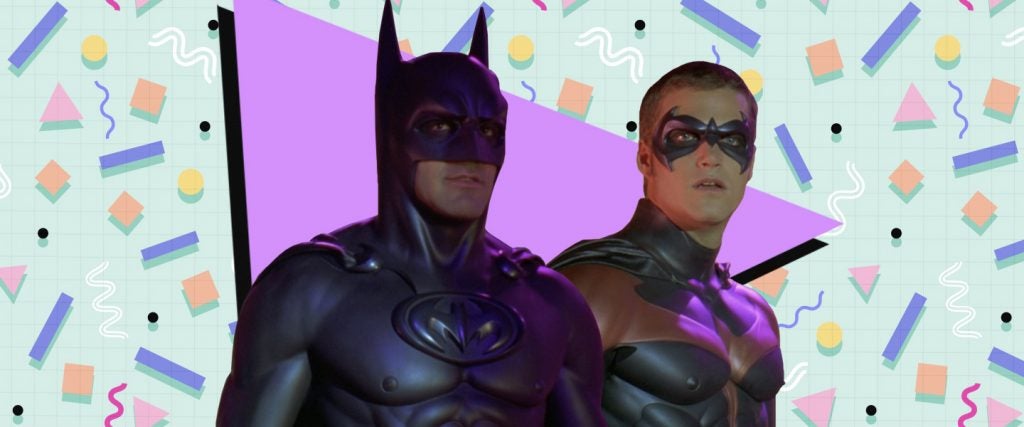2022 marks the 25th anniversary of the year that everything happened — 1997. It was an ear-biting, Pierce Brosnan-loving, comet-obsessed world, and we’re here to relive every minute of it. Twice a week over the next 12 months, we will take you back to the winter of sheep cloning and the summer of Con Air. Come for the Chumbawamba, and stay for the return of the Mack. See all of the stories here.
For every actor who inhabits the role of Batman, there’s at least one — and sometimes many more — fanboy-generated controversies they have to deal with. For Ben Affleck, there was the infamous “Martha” scene in Batman v Superman, where the entire Batman-Superman rivalry ended because their moms had the same first name. For Christian Bale, there was his endlessly-ridiculed Batman voice. Even for the beloved Michael Keaton, there was a time when the fanbase revolted at the casting of Mr. Mom as the Caped Crusader. All of them, though, pale in comparison to the George Clooney bat nipple controversy of 1997.
In case you needed a refresher on Batman film history, this happened after Tim Burton directed the massively successful 1989 Batman. Three years later, he — and Keaton — returned for the sequel, Batman Returns. However, the second film didn’t perform as well as the first, and there were complaints from parents that the film was too dark for kids. So, Warner Bros. got someone else to direct the third film, The Lost Boys director Joel Schumacher. Keaton, however, didn’t want to be Batman without Burton, so he departed and was replaced by Val Kilmer.
Batman Forever was the third movie in the franchise. And while the luster on that film has since faded, it was a massive success in 1995, and it brought in more money than Batman Returns, reinvigorating the Batman films for the foreseeable future. There was, however, one caveat to that success: Many people — including Batman creator Bob Kane — objected to the inclusion of nipples on Kilmer’s batsuit, and in the media, the bat nipples were a regular punchline. As Robin actor Chris O’Donnell joked, “I think the maker of the suit has a deal with the WonderBra people.” Still, the nipples didn’t seem to take away from the film’s success, and when Schumacher returned for the fourth film, Batman & Robin, they appeared once more, this time on George Clooney, who now replaced Kilmer.
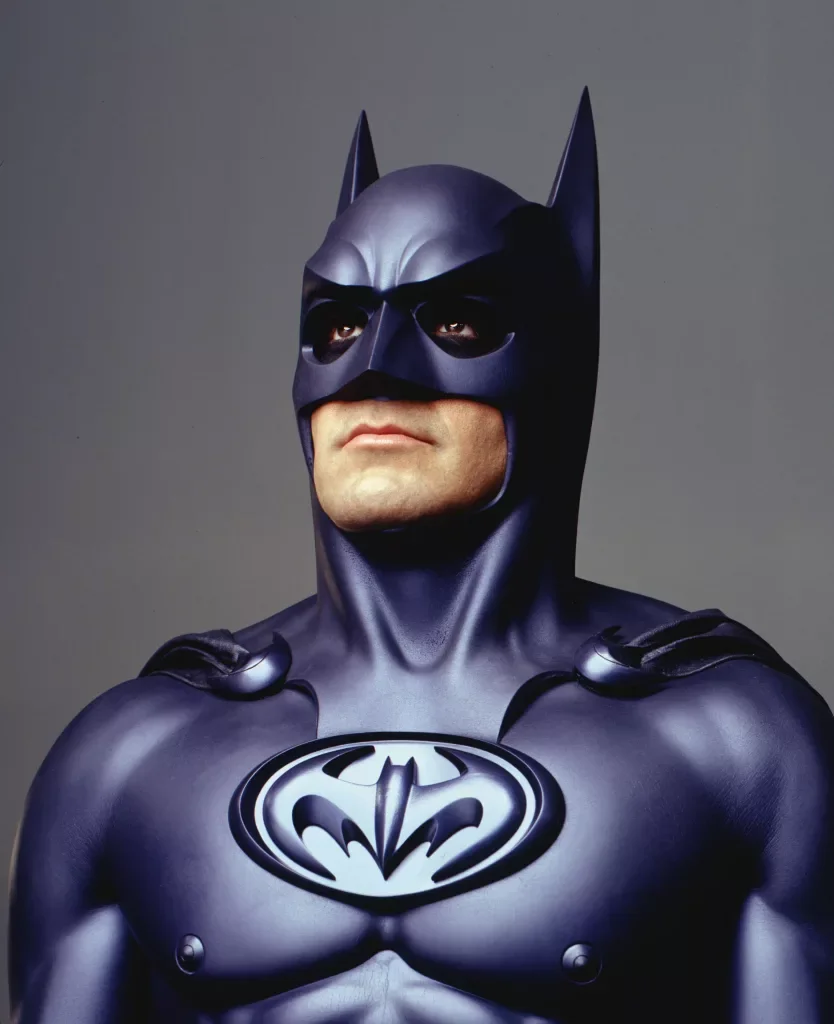
The bat nipples, though, quickly sucked up all the oxygen surrounding Batman & Robin. In particular, Clooney’s batsuit was lighter in color — with a blue-ish purple tint — making the areolas far more pronounced. It didn’t help that critics and fans alike hated Batman & Robin for its campy tone and silly villains. And so, the bat nipples came to represent all that was wrong with the film. “The movie series seems to be moving closer in spirit to the goofy TV series as George Clooney becomes the man behind the bat nipples,” wrote the Chicago Tribune’s Mark Caro. A review in the St. Paul Pioneer Press also criticized the performances of Clooney et al, snidely remarking, “With those masks on almost all the time, their rubber nipples are more expressive than their faces.”
As silly as the controversy sounds 25 years later, the bat nipple debacle was so massive that when Kane died in 1998, his aversion to the bat nipples was mentioned in his obituary. Also, for the rest of his life, Schumacher fielded questions about the nipples, usually laughing them off. He even joked that he expected to see bat nipples on his headstone. That didn’t quite happen, but when Schumacher died in 2020, many of his obituaries cited him as the man who put nipples on the batsuit.
The thing is, in one of his final interviews, Schumacher mentioned that, while he takes responsibility for the offending nips, they weren’t his idea. Instead, they originated with lead sculptor Jose Fernandez, a prolific figure in Hollywood costume design who has made costumes for many current Marvel, X-Men and DC movies.
I recently caught up with Fernandez to talk about all things nipplegate — as well as his career more generally, which began on the Burton Batman films. Even he agrees, though, that the nipples went a little too far in Batman & Robin.
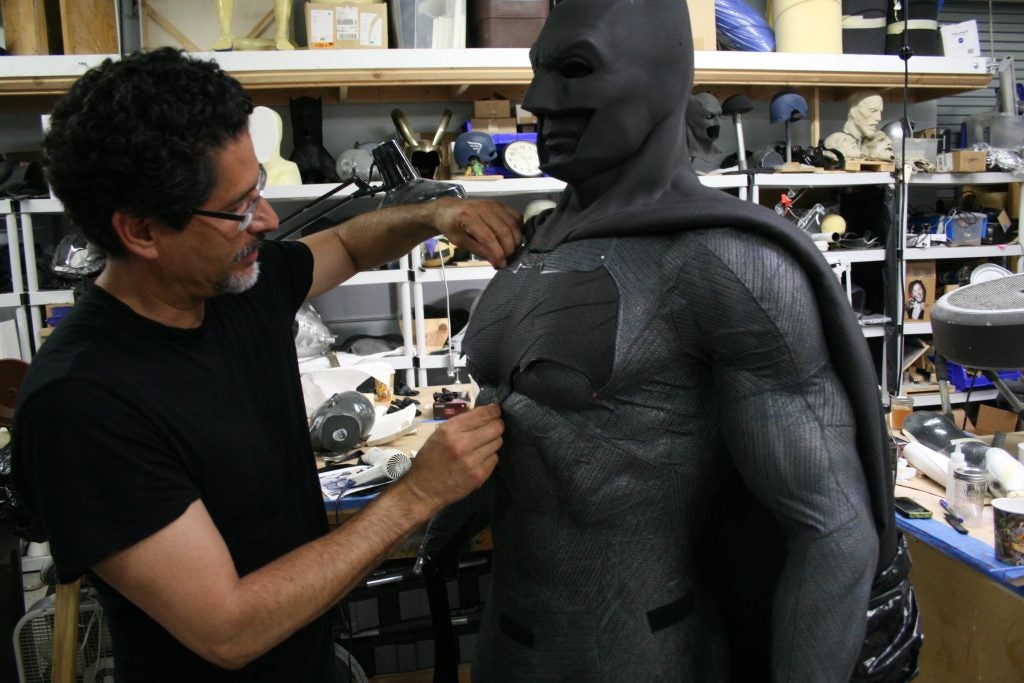
How did you get your start in costuming?
I was always into making costumes for Halloween and tweaking my clothes, but my first break into costuming was Catwoman in Batman Returns. I was hired as an intern, just cleaning up the fatsuit for Danny DeVito. But then, they reached a time where they needed someone to do Michelle Pfeiffer’s Catwoman suit, and no one was available, so they let me do it. Actually, it was Annette Benning in the role at first, but by the time I worked out the prototype, it was Michelle Pfeiffer.

Before I got started on Catwoman, I spoke very briefly to Tim Burton. He did a 30-second napkin sketch where he drew a circle, then a couple more circles, and some stitches — that was it. I said, “I got it,” and went off to sculpt it. They liked my prototype for the cowl, which included the stitches, and they went with that. Eventually, the Catwoman costume became a latex bondage suit with stitches on it.
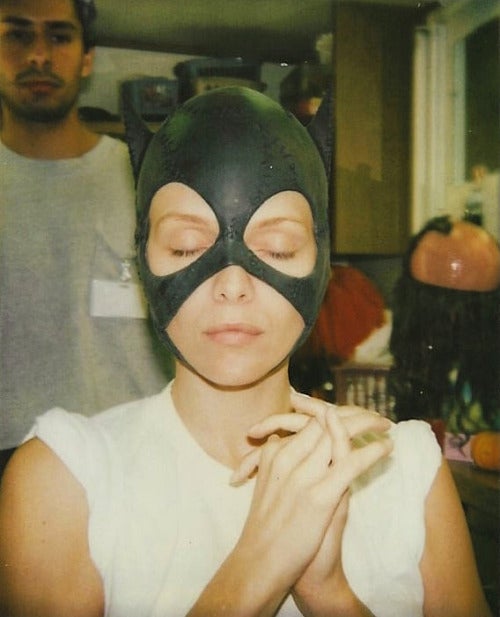
Also, I was around in the building during one point when they were doing a fitting with Michael Keaton in the Batman suit, and the cowl didn’t quite fit right, so I resculpted those features on the cowl. That’s what I did for that film, and then, for Batman Forever, I was hired to sculpt the Batman suit head-to-toe.
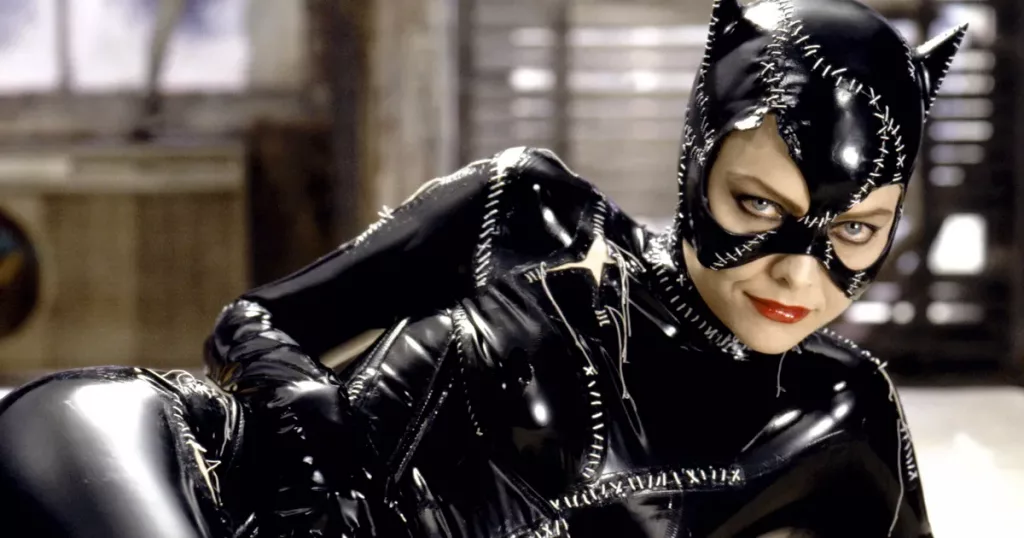
There was a major shift in Batman’s design from Batman Returns to Batman Forever. What informed that change?
Bob Ringwood was the lead costume designer on all of those Batman films, and the way he did things was that he didn’t have many drawings to go from. Instead, he would have images of things for us to draw from. For Batman Forever, he had images of 1940s art deco stuff, like trains and toasters and things like that. He built a world of feeling and that informed what I did. I just started playing with full-size sculptures, and he’d come in and tell me what he liked and didn’t like until we got to a place where the sculpture was in place.
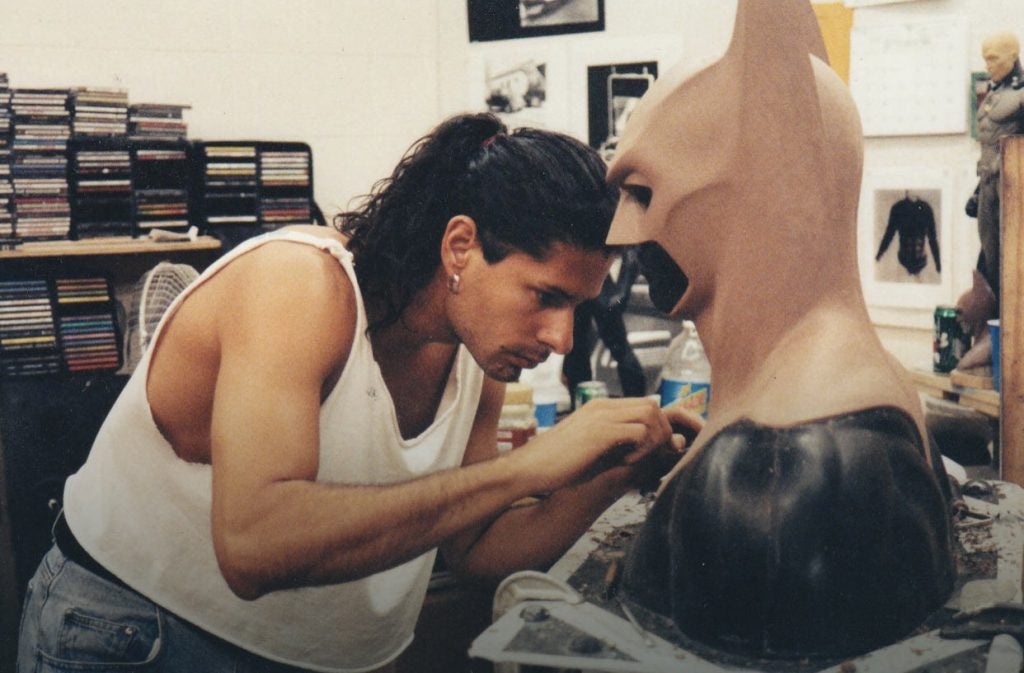
For the batsuit in Batman Forever, the biggest leap was the finishing. I brought in a friend of mine that I grew up with, Eddie Ivey, who did automotive painting. I thought getting someone like him would be key. Once I finished the sculpture, we molded, casted and fiberglassed it, then he used body filler, sanded it, lacquered it and polished it so there was a very high finish to it.
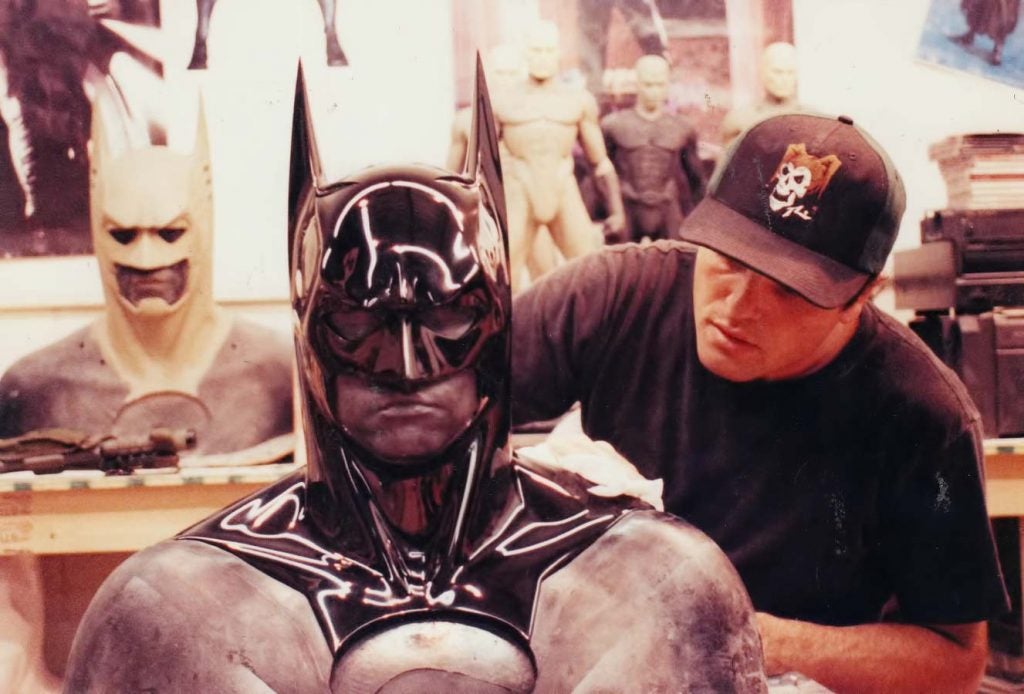
How does that affect what the audience sees?
Well, for the original film, it looked like they sculpted the batsuit with oatmeal — it was really rough. As a film, it’s interesting — it’s a time capsule — but it was really rough. The second film, they used a guy named Ray Tricker who worked on Star Wars. They got some smoother surfaces, but it was kind of “lumpy smooth.” I wanted things to be as clean as a car. I wanted crisp, beautiful surfaces, so that’s the main difference.
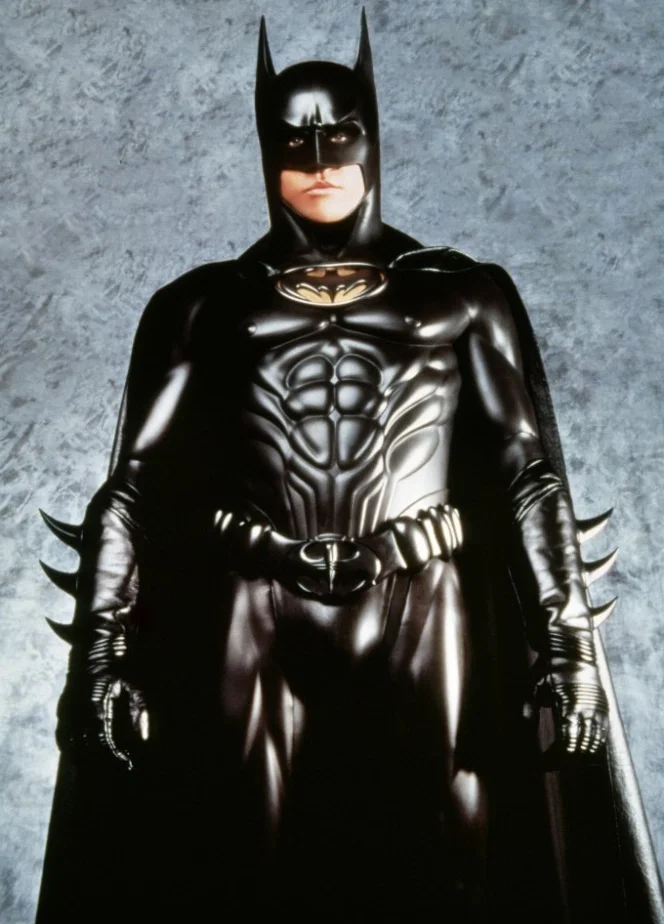
How did that look evolve for the fourth film?
Well, I started on Batman & Robin a little bit later because I was on another project. So, when I arrived, someone was already working on Batman and I got to work on Robin. There’s not a whole lot to say about Robin, except that it was informed by his Nightwing suit in the comics.

Originally, they wanted to totally reinvent the suit for Clooney, but, a few months in, it wasn’t going well, so they decided to just try the Kilmer suit on him instead. It fit pretty well, so they decided to use the same suit with a few adjustments, like the cowl — which I resulpted for Clooney — and the new color. For years, there had been talk about doing a blue Batman, like in the comics, but for Batman & Robin, they committed to a blue-black suit, which sometimes appeared purple onscreen because of the lighting. Another big difference was that the nipples were more, um, showcased, if you will.
Schumacher credited you with first putting the nipples on the batsuit, is that correct?
Yes, it is. With Val Kilmer’s suit in Batman Forever, the nipples were one of those things that I added. It wasn’t fetish to me, it was more informed by Roman armor — like Centurions. And, in the comic books, the characters always looked like they were naked with spray paint on them — it was all about anatomy, and I like to push anatomy. I don’t know exactly where my head was at back in the day, but that’s what I remember. And so, I added the nipples. I had no idea there was going to end up being all this buzz about it.
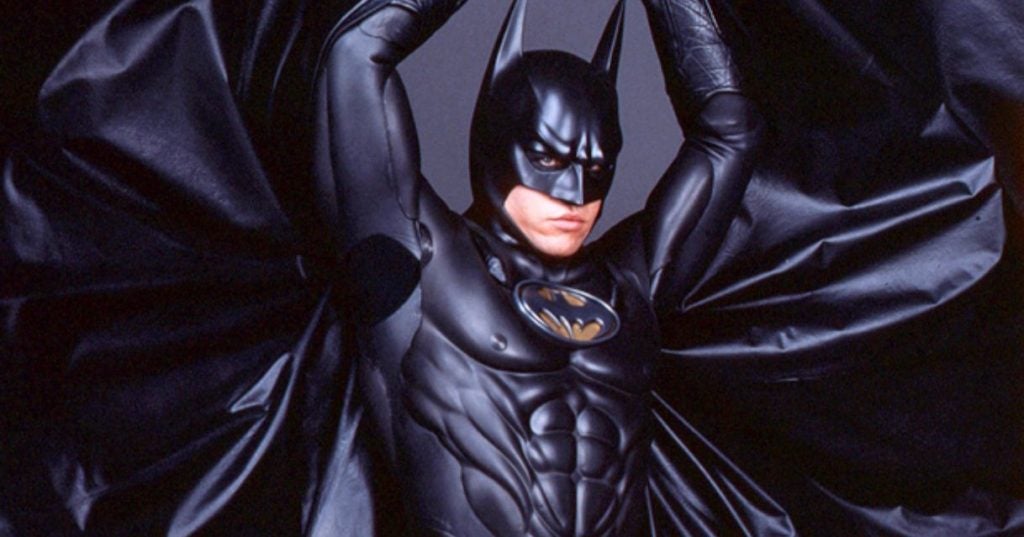
Why do you think the nipples became such a big deal for Batman & Robin, especially when they had already appeared in Batman Forever?
Well, in the first one, they were just a little blob of clay. It was subtle — it was a blip. But for Batman & Robin, Joel Schumacher loved the nipples, so he said, “Let’s showcase them.” Schumacher wanted them sharpened, like, with points. They were also circled, both outer and inner — it was all made into a feature of the batsuit. I didn’t want to do it, but he’s the boss, so we sharpened them, circled them and it all became kind of ridiculous.

How come Batman and Robin had nipples but Batgirl didn’t?
With Alicia Silverstone, they wanted nipples on her too. They said, “If the guys have nipples, the girls should have nipples, too.” After I sculpted it though, everybody realized, maybe not. It was a bit obscene, so we took the nipples off.
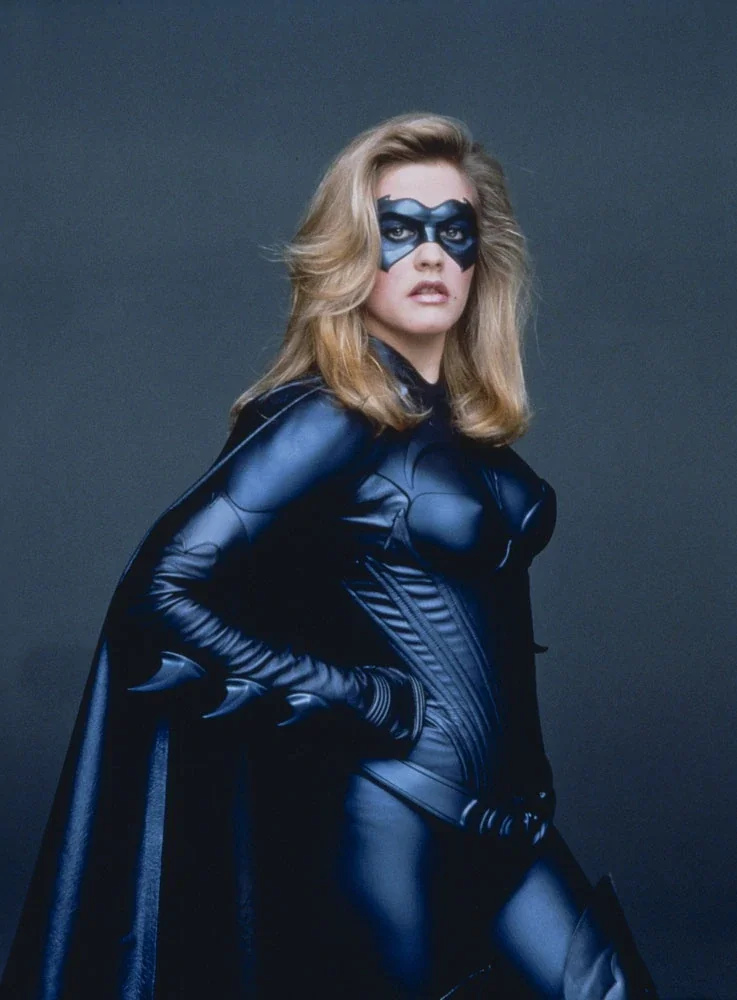
What did you think when it became a whole controversy?
I didn’t really care or think much about it. Whenever I had a chance, I’d explain where the concept came from — from Roman armor — but after a while, it got its own life and I just let it be. I couldn’t think of it much more after that.
Finally, what did you think of Batman & Robin as a film?
I don’t even know that I finished the film, to be honest. I was at the screening, but I was thinking to myself, “This is not good.” To me, it was like a stage musical, but without the music, more than it was a Batman movie. The movie was just all over the map — it was silly and bombastic, and there are times where you got shots focused on just Batman’s ass. It was all a little much for me.
